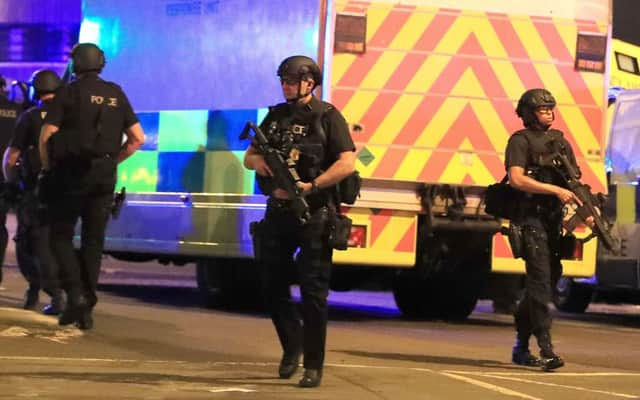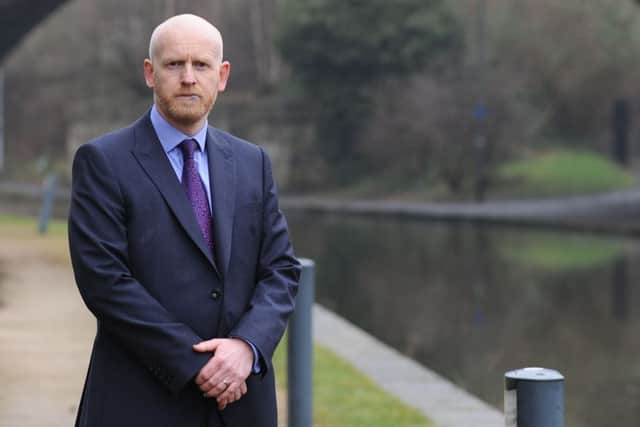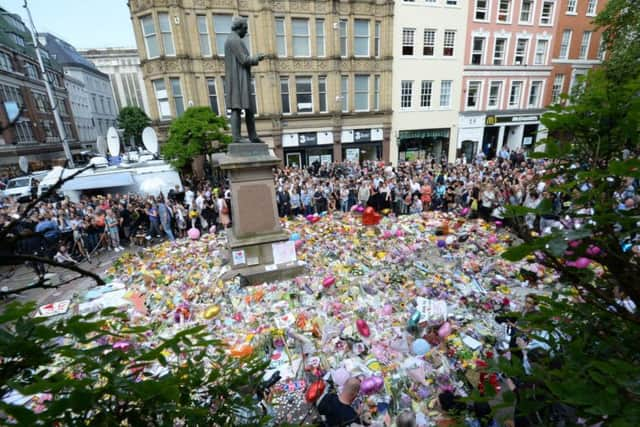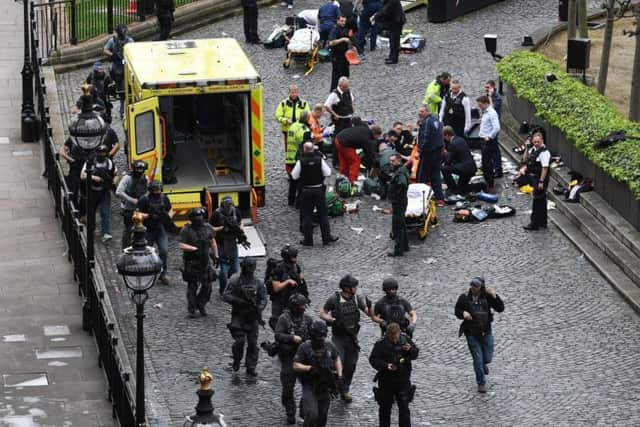New '˜scale and pace' of terror threat in Yorkshire, warns police chief


THE DEADLY threat posed by terrorists in Yorkshire and across the UK shows no sign of abating after an “unprecedented” 12 months, the regional head of counter-terror policing has warned.
Speaking exclusively to the Yorkshire Evening Post, Detective Chief Superintendent Martin Snowden, said the “scale and pace” of terrorism had changed, with more lone attackers armed with low-tech weapons such as knives and vehicles.
Advertisement
Hide AdAdvertisement
Hide AdHe said: “It is that change in scale and change in pace that has probably made our work harder over the past 12 months.”


Armed police yesterday killed a gunman who shot dead three people in the French town of Trebes, pledging allegiance to the so-called Islamic State (IS) group.
Meanwhile, Parsons Green Tube bomber Ahmed Hassan, whose device injured 51 when it partially exploded on a carriage in September, was jailed for life.
Det Chief Supt Snowden said in a 12-month period that had seen five attacks on UK soil, his unit’s workload had been about a third higher than normal and he was “fully expecting” it to stay at this heightened level for some time.
Advertisement
Hide AdAdvertisement
Hide AdThe increase in counter-terrorist activity was “across the board”, from the number of people referred to the Government’s anti-radicalisation Prevent programme to the number of people arrested for terror offences, he said.


“The past 12 months, since the first attack in March last year, has been an extraordinary, unprecedented year with challenging demands for counter-terrorism policing,” he said.
“We saw five terror attacks, 36 people died and hundreds more were injured so we know there are, quite understandably, increasing concerns.”
The deadliest of the five attacks was the bombing of Manchester Arena in May, as fans streamed out of the doors after a show by American singer Ariana Grande.
Advertisement
Hide AdAdvertisement
Hide AdAmong the 22 victims killed were 14-year-old Sorrell Leczkowski, a pupil at Allerton High School in Leeds, Leeds Beckett University student Courtney Boyle, 19, and Wendy Fawell, 50, from Otley.


Across the country, a total of 600 investigations are running into 3,000 individuals, with a further 20,000 people flagged as being of concern.
Det Chief Supt Snowden said: “Traditionally, we would probably be investigating complex conspiracy-style plots that were possibly slightly slower in nature and involving groups of certain sizes. We are still doing that but we are now also seeing more separate plots with lone individuals and less sophisticated methodology, as we have seen in some of the attacks in 2017 that were using vehicles and knives in their attacks.”
But he insisted his West Yorkshire-based unit had the resources it needed to match the threat, saying mainstream police forces and other counter-terror units across the country offered “additional support” when it was needed.
Advertisement
Hide AdAdvertisement
Hide AdBy the same token, he said, his officers had helped in the investigations into the attacks on Manchester Arena, Westminster Bridge and London’s Borough Market, which claimed a total of 35 innocent lives.


Det Chief Supt Snowden said armed police officers would continue to be a common sight at shopping centres, sporting and music events and airports as they “work as hard as we can to keep the public safe”.
The radicalisation of potential terrorists online is “one of the greatest threats and one of the hardest to police”, Det Chief Supt Snowden said.
He said: “That is where a lot of the radicalisation can occur, from both sides, whether it be of an Islamist nature or an extreme right-wing nature. The risk of online radicalisation is probably one of the greatest we face now. People can become radicalised in their own bedrooms and there isn’t the need for physical activity or physical meetings.”
Advertisement
Hide AdAdvertisement
Hide AdDet Chief Supt Snowden said investigating the dissemination of extremist material online was extremely time-consuming, saying if one person sent a video to 100 others, all 100 would have to be assessed by security services to see whether they had forwarded it on.
“It can quickly grow in terms of size and scale,” he said.
He said it would be helpful if there was “less of that [material] available to members of the public”.


Concerns over the availability of material such as execution videos, recruitment campaigns and bomb-making instructions on the internet intensified after a wave of terrorist atrocities hit Britain in 2017. The Home Office said all five attacks on UK soil last year had an “online component”, and major platforms have come under sustained pressure over the issue.
Last month, home secretary Amber Rudd unveiled new technology that aims to automatically detect terrorist content before it hits the web.
Advertisement
Hide AdAdvertisement
Hide AdTests show the tool can identify 94 per cent of IS propaganda videos.
Dr Afshin Shahi, a senior lecturer from the University of Bradford’s peace studies department, said the heightened terror threat in the UK had to be seen in a wider global context.
He said: “Things happening in countries like Iraq, Yemen and Syria have an effect in places as far away as Yorkshire, so you always have to bear the transnational nature of terrorism in mind.”
Dr Shahi said IS “and its propaganda machine” had long been encouraging its followers around the world to spread terror using low-tech weaponry such as knives or cars.
Advertisement
Hide AdAdvertisement
Hide AdBut he said the threat posed by IS had now “changed beyond recognition” since its territories in Iraq and Syria collapsed.
The organisation could still access the vast wealth it had amassed, while supporters who had travelled from around the world to fight with IS had dissipated.
He said: “Now, all of a sudden, thousands and thousands and thousands of foreign fighters who had been concentrated in specific areas in the Middle East have gone back to their home countries once more.”